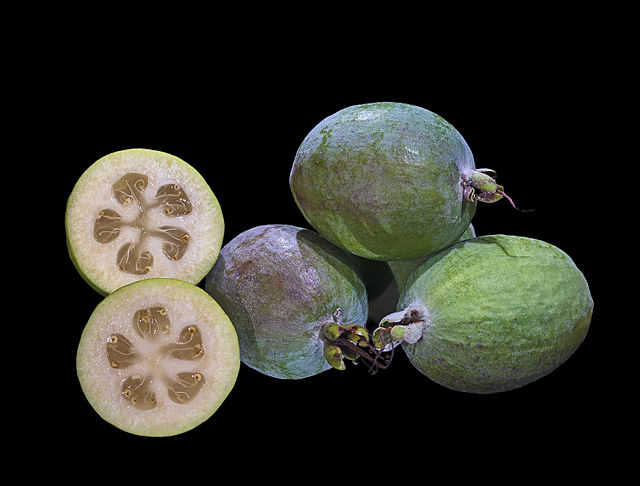An Associated Press report shows that the minor backyard fruit, feijoa (Acca sellowiana), actually overshadows kiwifruit’s popularity in New Zealand.
Although it costs 10 New Zealand Dollars ($5.89) per kg at grocers, many enthusiasts can only have it for free.
The fruit’s free market economy is because each southern autumn (April) it falls generously in leaf-strewn backyards.
Subsistence growers just pick up the fallen fruits for fresh consumption or give them to those who wish to avoid market prices.
Nurturing this sales limitation is the short shelf life of the fruit of 14 days in a chilled environment.
The feijoa harvest in New Zealand each April normally kickstarts a fruity repast for just a few weeks a year.
Neighboring Australia also goes feijoa-mad at this time, when markets often sell each fruit at 3 Australian dollars ($1.93).
Pointedly in New Zealand, some 100 commercial farmers have tried to broaden the species’ horizons by cultivating it for juicing. There is now a thriving feijoa cider and juice market in the country that reaches its peak revenue in April.
This autumn cherishing partially owes to the fact that feijoa is a fleshy, aromatic myrtle family fruit with jackfruit features.
Because of its texture and aromatic qualities, it also goes by other names such as pineapple guava or guavasteen.
Despite the homegrown appeal, the feijoa is not native to New Zealand, having come in the 20th century via Australia. Its origins are South American countries like Brazil and Uruguay, whose tropical climate echoes that of Oceania.
One New Zealand dweller clinches the overall appeal by saying that “we don’t love it [kiwifruit] the way we love feijoas.” For more bits on the reason for this feijoa love, delve into the general statistics below.
New Zealand Feijoa Fruit Statistics
Although not the origin of the fruit, New Zealand has been growing feijoa as a minor fruit for over 100 years. The annual national harvest amounts to around 800 tonnes, most of which for the domestic fresh fruit or juice industry.
What is the cultivation status of feijoa in New Zealand?
There are over 100 growers dedicated to the commercial output of the fruit for especially the fruit beverage industry. Alongside this developing cultivation, botanists have created over 20 varietals that have expanded fresh eating flavors and perpetuated commercial diversity.
Is there market potential for a NZ feijoa?
Weighing 80 to 120 g, feijoa fruits could have more market potential than the smaller kiwifruit (76 g). They average around 10 New Zealand Dollars ($5.89) a kg in domestic markets, which makes them potentially lucrative. The drawback is that they are quite perishable. While the fruits can stay a maximum four weeks at 4º Celsius chilling, they substantially lose flavor during the storage. Although shelf life partially keeps them a minor fruit with little exports, they are in high demand in Australia.
